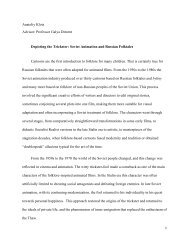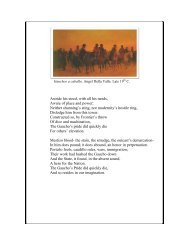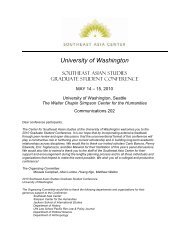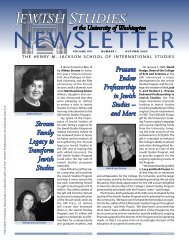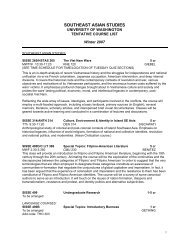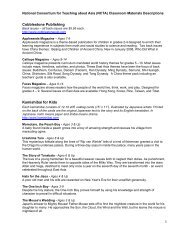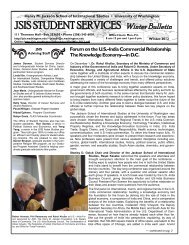to view full paper
to view full paper
to view full paper
Create successful ePaper yourself
Turn your PDF publications into a flip-book with our unique Google optimized e-Paper software.
devour her family. 38 The Kazakh heroine escapes from a werewolf-husband on back of her dark-<br />
grey horse. 39 Only the Kirghiz heroine gets on her horse by the name of Grey Tail without a clear<br />
reference <strong>to</strong> a flight from evil; all the listener learns is that her father dies. 40<br />
It should be noted that the magical horse as a symbol of a person’s power and identity is a<br />
common motif in Central Asian tales, with females being under the protection of this special<br />
familiar as often as males in contrast <strong>to</strong> European folktales, where the horse is consistently a<br />
male attribute (Motif s B401. Helpful horse, B211.1.3. Speaking horse, and B184.1. Magic<br />
horse). In the Kazakh tale “Девушка Дудар [A girl by the name of Dudar],” the heroine’s very<br />
conception is due <strong>to</strong> the sacrifice of a magical grey stallion that protects her family’s herds of<br />
horses from wolves (Motif V12.4.9. Horse as sacrifice). 41 A special horse motif is also found in<br />
tales, the heroines of which are not dressed or armored as men or escape an evil sui<strong>to</strong>r. For<br />
example, in a Turkish tale of ATU Type 403C (The Substituted Bride), the heroine is recognized<br />
by raising a horse, a talking one, incidentally, because the girl is endowed with a magical ability<br />
<strong>to</strong> have grass grow where she steps (a Turkic variant of Motif D1454.7. Treasure from<br />
footprints) when the rest of the land is dead because of the drought; in that tale, her raising the<br />
horse becomes her way of reuniting with her husband. 42 How important the image of the horse<br />
for Woman’s Magical Horse tale type becomes clear when one considers that according <strong>to</strong> its<br />
collec<strong>to</strong>r and transla<strong>to</strong>r Kira Van Deusen, the Nanai version “Endochochen” is the only Nanai<br />
38 “О девушке, ставшей царицей, и о её одиннадцати сыновьях [About a Girl Who Has Become the Queen and<br />
about her Eleven Sons]” in Калмыцкие народные сказки [Kalmyk folktales] in Russian translation, edited by I.K.<br />
Ilishkin and U.U. Ochirov (Elista: Kalmytskoie gosudarstvennoie izatel’stvo, 1961), 7-18.<br />
39 “Девушка Дудар [A girl by the name of Dudar]” in Золотой караван: сказки тюркоязычнчх народов<br />
Казахстана [Golden caravan: folktales of the Turkic peoples of Kazakhstan], in Russian, Valeria.T. Marchenko,<br />
compiler (Almaty: Ɵner, 1994), 43-52. Also see Appendix <strong>to</strong> the <strong>paper</strong>.<br />
40 “Tormuz” in Contes Kirghiz de la steppe et de la montagne [Kirghiz tales from the steppe and from the<br />
mountains], translated in<strong>to</strong> French by Remy Dor (Publications Orientalistes de France, 1983), 56-58.<br />
41 In Золотой караван: сказки тюркоязычнчх народов Казахстана [Golden caravan: folktales of the Turkic<br />
peoples of Kazakhstan], in Russian, Valeria.T. Marchenko, compiler (Almaty: Ɵner, 1994), 43-52. Also see<br />
Appendix <strong>to</strong> the <strong>paper</strong>.<br />
42 Tale 718 in Ahmet Edip Uysal et al., Uysal-Walker Archive of Turkish Oral Narrative (Lubbock, TX: Southwest<br />
Collection/Special Collections Library, Texas Tech University, Electronic edition, 2002), 12.<br />
15



